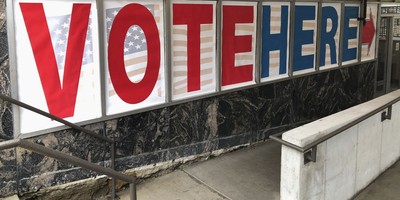Advertisement
Robert Samuelson, in his Washington Post article "It's time to drop the college-for-all crusade" (5/27/2012), said that "the college-for-all crusade has outlived its usefulness. Time to ditch it. Like the crusade to make all Americans homeowners, it's now doing more harm than good." Richard Vedder -- professor of economics at Ohio University, adjunct scholar at the American Enterprise Institute and director of The Center for College Affordability & Productivity, or CCAP -- in his article "Ditch ... the College-for-All Crusade," published on The Chronicle of Higher Education's blog, "Innovations" (6/7/2012), points out that the "U.S. Labor Department says the majority of new American jobs over the next decade do not need a college degree. We have a six-digit number of college-educated janitors in the U.S." Another CCAP essay by Vedder and his colleagues, titled "From Wall Street to Wal-Mart," reports that there are "one-third of a million waiters and waitresses with college degrees." More than one-third of currently working college graduates are in jobs that do not require a degree, such as flight attendants, taxi drivers and salesmen. Was college attendance a wise use of these students' time and the resources of their parents and taxpayers?
There's a recent study published by the Raleigh, N.C.-based Pope Center titled "Pell Grants: Where Does All the Money Go?" Authors Jenna Ashley Robinson and Duke Cheston report that about 60 percent of undergraduate students in the country are Pell Grant recipients, and at some schools, upward of 80 percent are. Pell Grants are the biggest expenditure of the Department of Education, totaling nearly $42 billion in 2012.
Recommended
Advertisement
The original focus of Pell Grants was to facilitate college access for low-income students. Since 1972, when the program began, the number of students from the lowest income quartile going to college has increased by more than 50 percent. However, Robinson and Cheston report that the percentage of low-income students who completed college by age 24 decreased from 21.9 percent in 1972 to 19.9 percent today.
Richard Arum and Josipa Roksa, authors of "Academically Adrift: Limited Learning on College Campuses" (2011), report on their analysis of more than 2,300 undergraduates at 24 institutions. Forty-five percent of these students demonstrated no significant improvement in a range of skills -- including critical thinking, complex reasoning and writing -- during their first two years of college.
Citing the research of AEI scholar Charles Murray's book "Real Education" (2008), Professor Vedder says: "The number going to college exceeds the number capable of mastering higher levels of intellectual inquiry. This leads colleges to alter their mission, watering down the intellectual content of what they do." Up to 45 percent of incoming freshmen require remedial courses in math, writing or reading. That's despite the fact that colleges have dumbed down courses so that the students they admit can pass them. Let's face it; as Murray argues, only a modest proportion of our population has the cognitive skills, work discipline, drive, maturity and integrity to master truly higher education.
Advertisement
Primary and secondary school education is in shambles. Colleges are increasingly in academic decline as they endeavor to make comfortable environments for the educationally incompetent. Colleges should refuse admission to students who are unprepared to do real college work. That would not only help reveal shoddy primary and secondary education but also reduce the number of young people making unwise career choices. Sadly, that won't happen. College administrators want warm bodies to bring in money.

























Join the conversation as a VIP Member